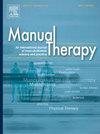Cervical spine pathology and headache in patients with connective tissue dysplasia syndrome
引用次数: 0
Abstract
This study aimed at evaluating the role of pathologic changes in the vertebral motor segment (VMS) of the cervical spine in the development of headache in patients with connective tissue dysplasia (CTD). Materials and methods. The study involved 130 patients, aged 18-59, with complaints of headache. 100 patients (76.9 %) had clinical manifestations of CTD (main group). The control group consisted of 30 patients (23.1 %) without CTD manifestations. The presence of CTD was confirmed by phenotyping according to T.I. Kadurina’s tables. The headache nature, frequency, and intensity were analyzed in all patients, and standard neurological examination, manual testing, and neuroimaging studies of all patients were performed. In the study presented, it was found that chronic migraine, headache associated with temporomandibular joint dysfunction (TMJD) was more common in the group of patients with CTD. Patients with headache on the background of CTD had pathological changes in the cervical spine in the vast majority of cases. Functional blockade of the VMS of the cervical spine with the formation of myofascial trigger zones in the trapezius and pericranial muscles is detected significantly more often in patients with CTD. Thus, it is necessary to take into account the presence of functional disorders in the VMS of the cervical spine when diagnosing and treating headache in patients with CTD.结缔组织发育不良综合征患者的颈椎病变与头痛
本研究旨在评估颈椎运动节段(VMS)的病理变化在结缔组织发育不良(CTD)患者头痛发病中的作用。材料和方法。研究涉及 130 名主诉头痛的患者,年龄在 18-59 岁之间。100名患者(76.9%)有结缔组织发育不良的临床表现(主要组)。对照组包括 30 名无 CTD 表现的患者(23.1%)。根据 T.I. Kadurina 的表格,通过表型分析确认了 CTD 的存在。对所有患者的头痛性质、频率和强度进行了分析,并对所有患者进行了标准神经系统检查、人工测试和神经影像学研究。研究发现,慢性偏头痛、与颞下颌关节功能障碍(TMJD)相关的头痛在 CTD 患者中更为常见。以 CTD 为背景的头痛患者绝大多数颈椎有病理改变。在 CTD 患者中,颈椎 VMS 的功能性阻滞以及斜方肌和颅周肌肉肌筋膜触发区的形成明显更为常见。因此,在诊断和治疗 CTD 患者的头痛时,有必要考虑到颈椎 VMS 功能障碍的存在。
本文章由计算机程序翻译,如有差异,请以英文原文为准。
求助全文
约1分钟内获得全文
求助全文

 求助内容:
求助内容: 应助结果提醒方式:
应助结果提醒方式:


